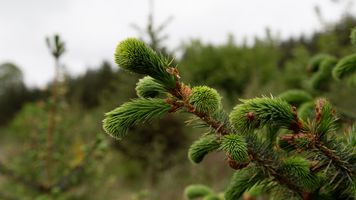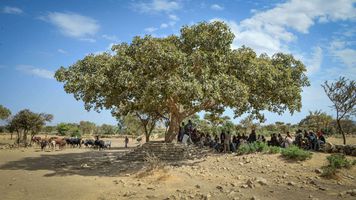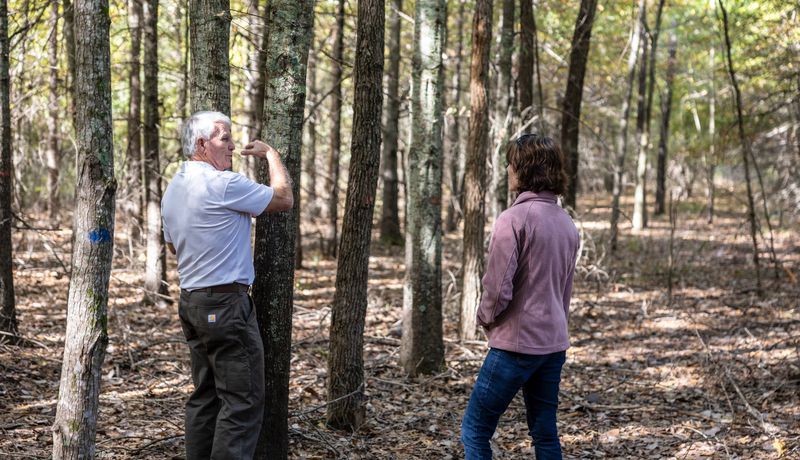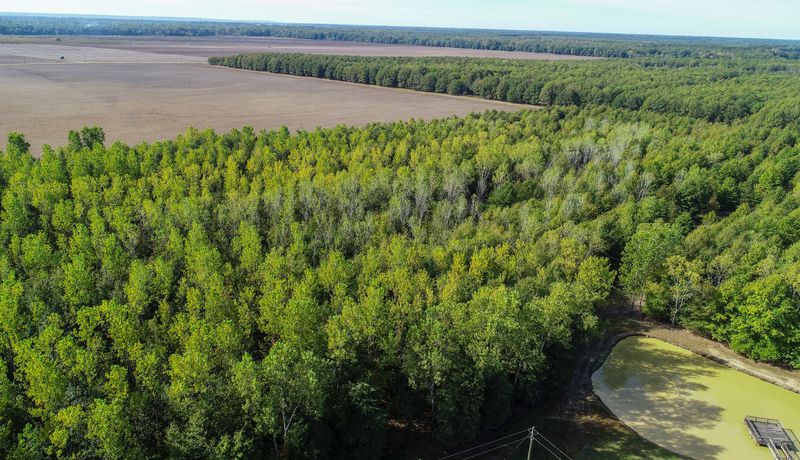In the Mississippi Alluvial Valley, the scale of environmental loss and the power of restoration are hard to grasp until you see them up close. That’s why on-the-ground project visits are a core part of how we work at Climate Impact Partners. They allow us, and our clients, to move beyond data and experience firsthand how high-integrity carbon projects deliver real climate, community, and biodiversity impact.
Earlier this month, Alterra Hetzel, our SVP, joined GreenTrees in the heart of the Mississippi Valley to witness this transformation firsthand. In the reflections below, she shares what she discovered and why this project represents a powerful blueprint for nature-based climate solutions at scale.
Our first stop
On a recent carbon project visit, I joined a mix of clients, colleagues, and forestry experts for a walk in the woods in the Mississippi Alluvial Valley. We were visiting the largest private reforestation initiative in the United States, the GreenTrees Mississippi Valley Reforestation Project. Our first stop was an hour drive outside Jackson, Mississippi to a 15-year-old stand of trees that towered over us and the surrounding land that had previously been used for agriculture. The sun was bright and streamed through rows of young cottonwoods, with silver leaves providing much needed relief from the Mississippi Delta heat for the young understory. Beneath those tall cottonwoods, hardwood saplings including pecan, oak, and sweetgum were steadily taking root.
The Mississippi Alluvial Valley, stretching from Illinois in the north to Louisiana in the south, has lost nearly 25 million acres of forest to industrial agriculture. Rows of soybeans and cotton once stretched across the same soil now shaded by cottonwoods and oaks, the air alive with the crunch of fall leaves under our feet and the sound of a woodpecker looking for its lunch through filtered light. This is possible because today, these lands are part of the GreenTrees Mississippi Valley Reforestation Project.
As I looked up into the forest canopy, I saw more than just trees; I saw the result of fifteen years of patient growth, careful management, and quiet optimism taking tangible form. My internal musings were interrupted as a forester pointed out a tagged tree truck, a reminder of the scientific rigor going into the design, monitoring, and verification of the project ensuring that climate benefits are delivered for 40 years or more. A carbon project like this takes more than just wishful thinking.
When Chandler Van Voorhis, Co-Founder of GreenTrees said, "We're helping our landowners restore bottomland hardwood forests on agricultural lands that should never have been cleared to begin with,” it didn’t feel academic, it felt real as we stood on the reforested land.
We're helping our landowners restore bottomland hardwood forests on agricultural lands that should never have been cleared to begin with.
A Region of Contrast and Choice
In the Southeast U.S., where between 60-90% of land is privately owned, farmers make choices every year: to plant, to graze, or to reforest. Agriculture pays well - up to $150 per acre per year, backed by billions in federal subsidies and global export demand. Driving from Jackson, Mississippi to the planting sites were miles of cleared lands – at a scale that took my breath away.
Against those odds, GreenTrees has offered something rare: a financial and ecological bridge. Through carbon markets, landowners can earn revenue for keeping trees standing for 40 years instead of cutting them down, while also restoring habitats for wildlife like black bears and over 325 bird species that migrate along the Mississippi Flyway.
Each acre of trees planted is not just carbon removed – it is legacy preserved, habitat returned, and land restored.
From Policy to Canopy
The story of this project begins decades before the first sapling was planted. In the 1990s, federal climate policy quietly created the foundation for today’s carbon markets in the United States by helping some farmers restore degraded land with native trees. GreenTrees took those early policy seeds and grew them into something unprecedented: a model that allowed landowners and private finance to work hand in hand and restore ecosystems at scale.
Today, those seeds have grown significantly with GreenTrees managing over 140,000 acres across 715 tracts and nearly 600 landowners, generating millions of tonnes of verified CO₂ removals through the American Carbon Registry. Each landowner that partners with GreenTrees has their own story, but each is united in their goal of restoring and preserving their land while earning an income for their families through the sale of verified carbon removals. The GreenTrees Mississippi Valley Reforestation Project is not only the largest reforestation project in the USA, it is the first and only ARR project to have issued tonnes that are approved under the Core Carbon Principles (CCPs) from the Integrity Council for the Voluntary Carbon Market (ICVCM).
140,000 Acres of trees planted
600+ Landowners participating
Why It Matters
In a market chasing new ideas, GreenTrees plays the long steady game, betting on nature. Its success demonstrates the power of patient capital and policy foresight. US policies de-risked early reforestation efforts when markets were undeveloped and uncertain. Voluntary carbon finance has since turned it into a scalable, sustainable enterprise allowing corporate buyers to achieve Net Zero goals today, in 2025, and beyond. That is not to say that the project doesn’t incorporate newest technologies though. Beyond standard requirements, the project uses remote sensing technologies (LiDAR and multi-spectral image capture) for more frequent and granular monitoring of the entire project area.
Whether viewed through satellite imagery or in real life as I observed, the forest’s canopy tells the story of that evolution with early dollars planting the seeds, and private dollars keeping them alive while planting (and sometimes replanting) more every year. The model has now become a blueprint for nature-based finance worldwide, as seen in initiatives through the UN Forum on Forests, the World Business Council for Sustainable Development, and the Tropical Forest Alliance.
A Living Proof of Possibility
During the project visit, I realized this forest was more than a carbon project, it was a fulfilled vision. From the first policy memos in the 1990s to the millions of tonnes of CO₂ sequestered now and into the future, I saw this project as living proof that climate solutions can grow, literally, over generations.
Walking back to the car, I looked around at the vibrant, healthy undergrowth, the afternoon light still trickling through, with dozens of butterflies in this once-barren landscape. This was restoration in motion with a landscape being returned to what it used to be and becoming something even stronger. I was beyond proud to have a role in growing the impact of this project even more.
Feeling inspired?
To learn more about how you can support this project, please get in touch.
Die neuesten Insights von
Climate Impact Partners

Three Carbon Projects Driving Community Impact
The best carbon projects don’t just cut carbon, they can restore nature, improve lives and provide new economic opportunities for communities.
Weiterlesen
Wir widerlegen populäre halbwahrheiten zum thema CO2-kompensation
Wir widerlegen 10 populäre Halbwahrheiten zu Net Zero und CO2-Kompensation
Weiterlesen
Building Trust Through Measurable Climate Impact: An In-Depth Q&A with Sil from Climate Lab
Climate action isn’t just about reducing emissions, it’s about creating solutions that deliver measurable benefits for people and the planet.
Weiterlesen















